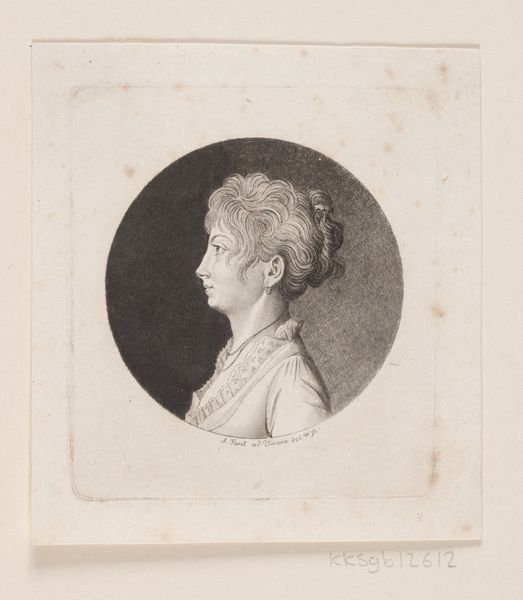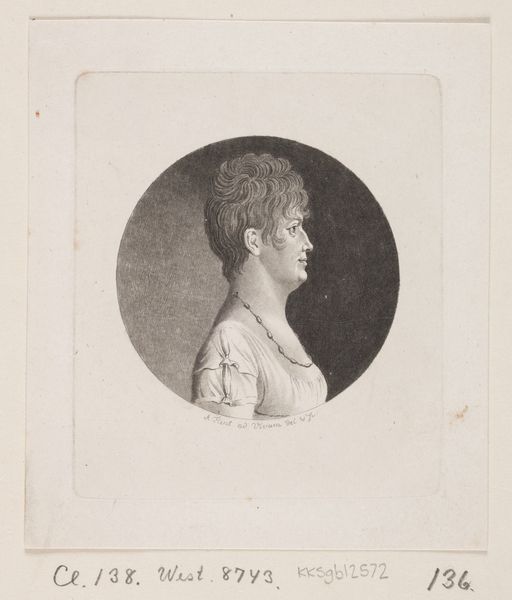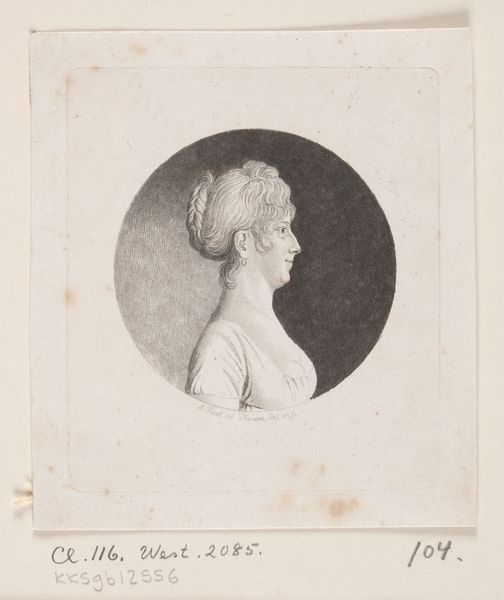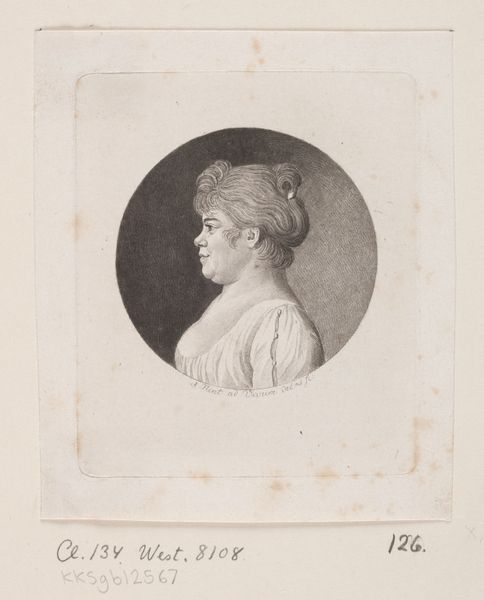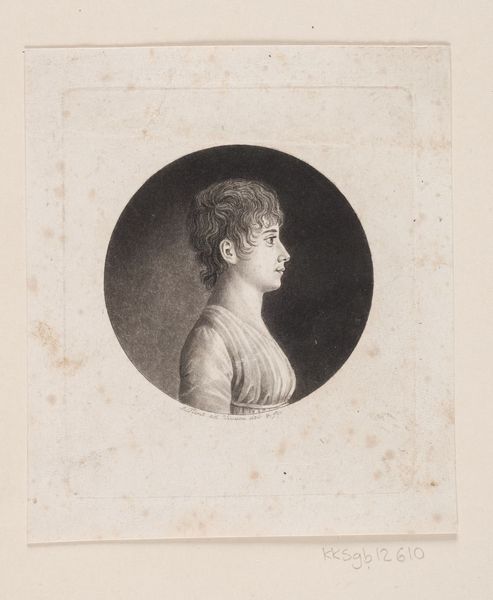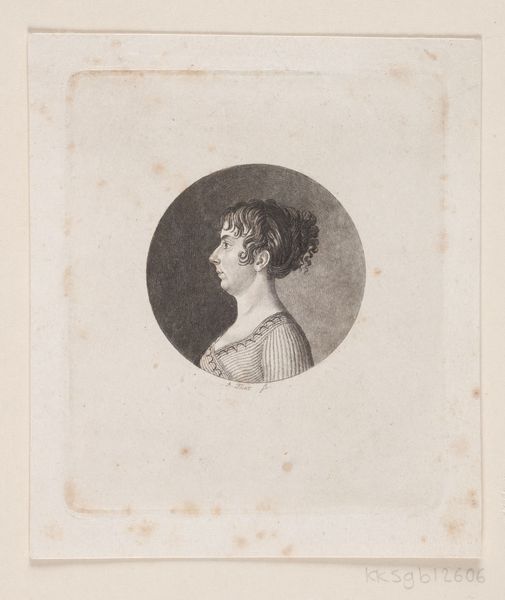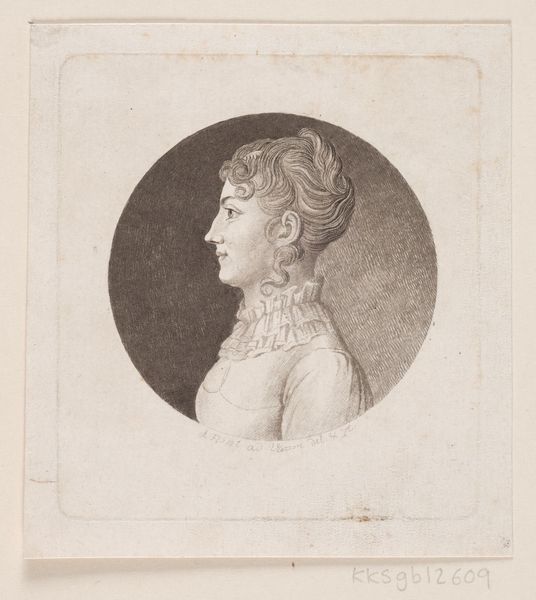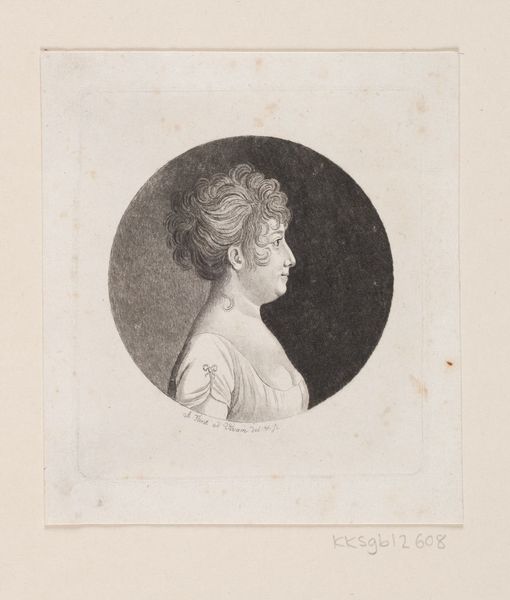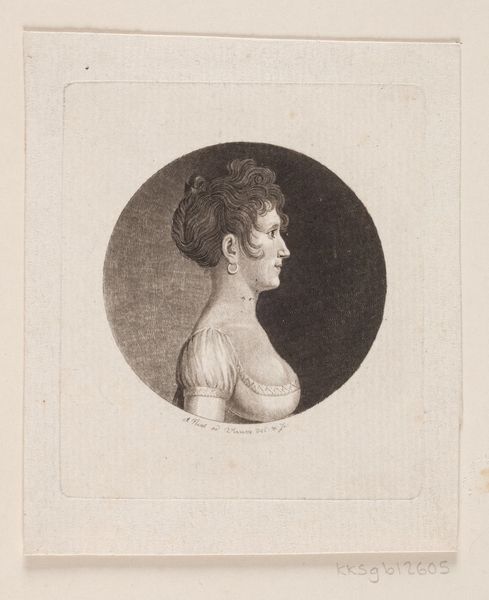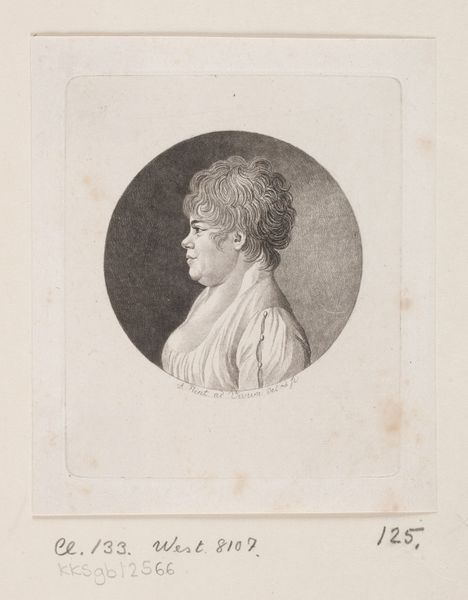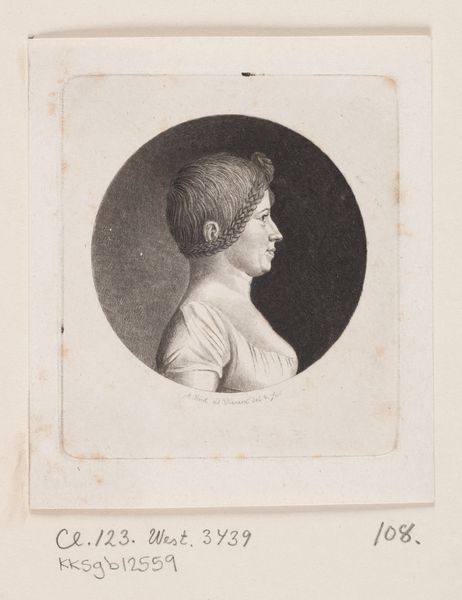
drawing, print, pencil
#
drawing
#
neoclacissism
# print
#
pencil sketch
#
charcoal drawing
#
pencil drawing
#
pencil
Dimensions: 60 mm (None) (billedmaal), 94 mm (height) x 81 mm (width) (plademaal)
Editor: This is an intriguing portrait titled "Ubekendt kvindeportræt" by Andreas Flint, created sometime between 1767 and 1824 using pencil and printmaking techniques. The profile view gives it a somewhat classical, almost cameo-like feel. How do you interpret this work in its historical context? Curator: It’s important to consider Neoclassicism here. This movement consciously revived classical aesthetics but also served specific cultural and political purposes. How might the choice of such a stark profile portrait and the print medium speak to ideas circulating in society at the time? What about the democratization of images? Editor: So, the choice of a print potentially broadened its distribution? Curator: Exactly. Think about who could have afforded painted portraits versus prints. Moreover, the anonymity inherent in the title, “Unknown Woman Portrait,” raises questions. Was it truly impossible to identify the sitter, or does this anonymity serve a different function? What stories does that suggest to you about women’s public versus private identities in that period? Editor: It makes me wonder about the subject’s social standing. Perhaps she wasn't a member of the elite. Or perhaps, by remaining unknown, she represents all women in some way? Curator: Precisely. The seemingly straightforward image actually opens up multiple avenues for investigation regarding class, representation, and the public role of women in a changing society. Does the choice of medium amplify those ideas further? Editor: That is so fascinating, thinking about art's reach at that moment and the message it carried for different social groups. Thanks for sharing that. Curator: It's the details, and the context, that really bring these images to life. A fruitful conversation!
Comments
No comments
Be the first to comment and join the conversation on the ultimate creative platform.
